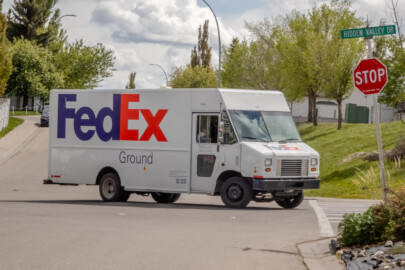Start Smart: Assess Your Fulfillment Readiness
Smooth fulfillment isn’t just a nice-to-have. It is the difference between a happy customer and a lost sale. If you need a clear, straight-to-the-point audit for fulfillment readiness, from transport costs and inventory distribution to packaging, shipping, data, and customer alignment, this D2C fulfillment checklist is designed for your direct-to-consumer needs. Whether you need to validate logistics health or close gaps, this checklist can help you accomplish it efficiently and affordably, all while keeping customer trust intact.
The Checklist
1. Run a Transportation Cost Analysis
Overlooked surcharges and hidden fees erode margins. A quick audit can often reveal substantial—and even potentially unexpected—savings. Start by reviewing recent freight and parcel invoices. Make sure you pay particular attention to common accessorial charges, like:
-
Liftgate service
-
Indoor deliveries
-
Residential delivery
-
Stop-off charges
-
Limited access
-
Storage/deferment
Compare carrier pricing by zone and mode, including those accessorial charges, to get a better idea of your actual shipping costs. Then, negotiate discounted rates with your preferred carriers or explore hybrid strategies that allow you to use multiple carriers to accomplish more efficient shipping at a cost that makes more sense for your brand.
2. Evaluate Geographic Inventory Distribution
Take a look at where your inventory is located across the country, including how that inventory distribution compares to your regular customer and delivery areas. Centralized stock—especially stock held in a single location—means slower delivery and higher costs. Instead, strive to stay agile, with inventory located in different regions to ensure smooth fulfillment.
Start by using sales data to map top delivery regions. Compare delivery times and costs from single vs. multi-node setups. Then, rebalance SKUs across facilities for speed and cost efficiency, effectively decreasing your costs while improving delivery speed—particularly in areas that might previously have had a long wait to get their deliveries. A D2C fulfillment checklist should always factor in regional positioning.
3. Refine Your Packaging Cost Strategy
Your packaging isn’t just about cost, though it’s often easy to overspend on the packaging process. It’s also about your branding. You want customers to have a good unboxing experience that they can count on—no matter when they order from you or where the package comes from. Furthermore, your packaging can impact the cost of your shipment, especially if you use oversized or bulky packaging that increases the size of the delivery.
Measure your cost per package across SKUs. Then, implement right-sized, tiered packaging solutions that allow your fulfillment centers to place items in the right-sized packages for their needs.
If you have delicate items or items that are easily damaged in shipping, test protective options to see which ones work well to decrease package damage while still reducing padding bloat, decreasing the cost of your shipments.
4. Streamline Shipping Efficiency
While it’s important to cut shipping and fulfillment costs where you can—especially with shipping costs on the rise in many areas—slow fulfillment quickly leads to unhappy customers. Today’s customers are used to receiving their orders quickly. If you aren’t able to deliver on their expectations, they may quickly turn to other brands to meet their needs.
Adding automation across your fulfillment centers can streamline shipping efficiency and improve customer satisfaction. You can also:
-
Batch pick/pack by zone or order type to improve efficiency in the warehouse
-
Streamline labeling and carrier selection so that employees do not have unnecessary questions about which options to use
-
Set shipping SLAs and track cycle times to get a better idea of your overall performance
With these strategies, you can speed up the fulfillment part of the process, decrease delays, and get products into customers’ hands.
5. Align Fulfillment with Customer Expectations
Promised delivery times must match reality or trust erodes. If you are failing to meet your customers’ expectations, it doesn’t take long for them to turn to your competitors to meet their needs in your industry.
Conduct an audit of your promised delivery times versus actual delivery windows and adjust delivery promises accordingly. Enable real-time tracking via email and SMS to ensure that customers can keep track of where their shipments are and get notifications of any delays or updates.
In addition, offer simple upgrade options to allow customers to get deliveries faster for a surcharge, or provide loyalty perks for frequent customers. These small steps, built into your D2C fulfillment checklist, can significantly increase customer loyalty and satisfaction.
6. Monitor 3PL Performance and Data Access
No visibility into shipping and fulfillment means you have little to no control over the process, which can cause unexpected problems for your customers. Make sure you are getting all the data you need from your fulfillment partner. Automated performance reporting from your 3PL can provide significant insights into overall performance. Ask for things like:
-
The percentage of orders delivered on time
-
Shipment accuracy
-
Delay flags
Use these reports to pinpoint areas that may need improvement and steer toward better overall outcomes.
7. Integrate Multichannel Fulfillment Systems
You might have a single channel today, but tomorrow could mean multiple channels—and fulfillment must adapt seamlessly. Ensure that your systems and 3PL can consolidate orders across channels.
Look for automation and analytics that support real-time routing and stock visibility so that you always know what is going on across systems.
Validate agility: Can your 3PL scale, pivot, and keep things moving if channels shift? With that information in hand, you are better able to handle any challenges that may come up in the fulfillment process, even as your brand grows.
8. Protect Brand Reputation Through Fulfillment
Fulfillment isn’t just logistics—it’s part of the brand experience. When you partner with a 3PL, confirm that they use technology for accuracy and faster delivery. Ask how fulfillment processes reinforce brand values and customer trust. With that information in hand, you can make more effective decisions about the right fulfillment partner for your needs.
Make Fulfillment Work for You
A rock-solid fulfillment operation means lower costs, faster delivery, smoother ops, and stronger customer loyalty. Use this D2C fulfillment checklist to benchmark your readiness and identify gaps worth fixing.
Want help turning checklist findings into improvements—or need audit support? Talk to a fulfillment expert or explore resources at symbia.com/resources









